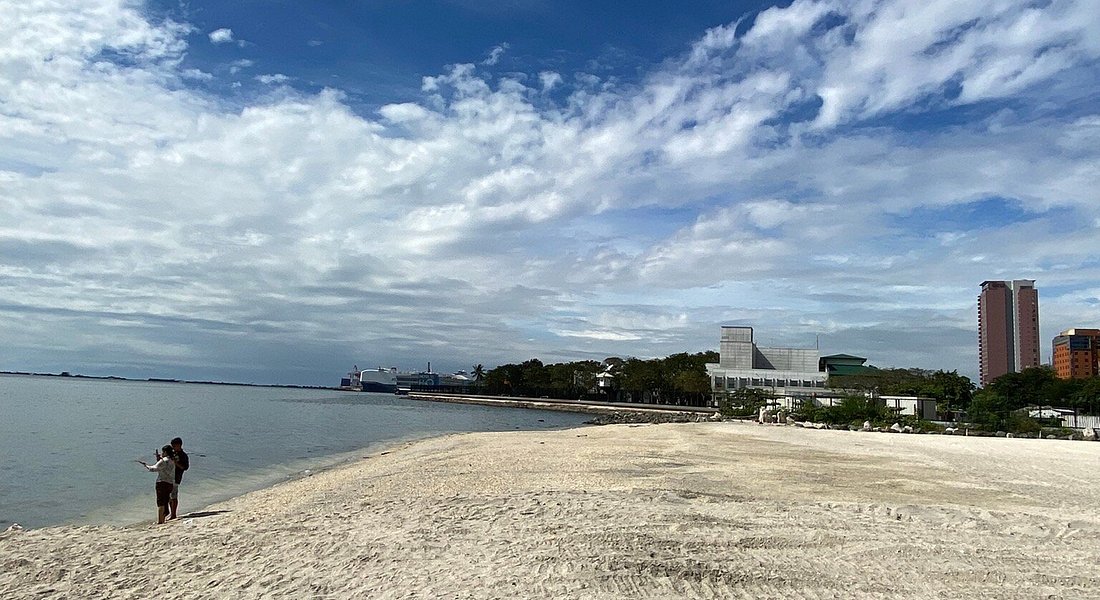Is Manila Bay's Vibrancy Sustainable? A Critical Look

Table of Contents
The Successes of Manila Bay's Rehabilitation
The Manila Bay rehabilitation project represents a significant undertaking, yielding notable improvements in several key areas. The substantial investment in cleanup efforts has demonstrably impacted water quality. This success can be attributed to a multi-pronged approach incorporating various strategies.
- Significant Improvements in Water Quality: Independent studies have shown a marked reduction in coliform bacteria levels in certain areas of the bay, indicating cleaner water and a healthier environment. These improvements are vital for supporting marine life and fostering a safer recreational environment.
- The Dolomite Beach Project: A Double-Edged Sword: The creation of the artificial dolomite beach has undoubtedly boosted tourism and enhanced the bay's aesthetic appeal. However, concerns remain regarding its long-term environmental impact and the sustainability of this approach. Critics question the artificiality of the project and its potential disruption to the natural ecosystem. Further research and monitoring are needed to fully assess its long-term effects.
- Successful Waste Management Initiatives: The implementation of stricter waste management regulations and the increased participation of local communities in cleanup drives have contributed significantly to reducing the amount of trash entering the bay. These initiatives show the positive impact of collaborative efforts.
- Improved Biodiversity Indicators: While complete data is still being collected, early indicators suggest a positive trend in the return of certain marine species. This reflects the improving water quality and the ongoing efforts to restore the bay's biodiversity.
Environmental Challenges Threatening Manila Bay's Sustainability
Despite the progress made, significant environmental challenges continue to threaten Manila Bay's sustainability. The sheer scale of pollution, coupled with the impacts of climate change, poses a serious risk to the bay's long-term health.
- Persistent Pollution Issues: Sewage discharge from densely populated areas remains a major source of pollution, introducing harmful bacteria and organic matter into the water. Industrial waste, including heavy metals and chemicals, further contaminates the bay, harming marine life and impacting human health. Plastic pollution, a global issue, continues to plague Manila Bay, with significant amounts of plastic waste accumulating on its shores and in its waters.
- The Impact of Climate Change: Rising sea levels and increased coastal erosion pose significant threats to Manila Bay's fragile ecosystem. Climate change exacerbates existing challenges, increasing the vulnerability of the bay to storm surges and flooding.
- The Role of Informal Settlements: The presence of informal settlements along the bay's shores often contributes to poor waste management practices, leading to increased pollution and environmental degradation. Addressing the needs of these communities is crucial for sustainable development.
- Ecosystem Vulnerability: The combined pressures of pollution and climate change place immense strain on Manila Bay's ecosystem, threatening its biodiversity and resilience. The bay's delicate balance requires careful management to prevent irreversible damage.
The Impact of Tourism on Manila Bay's Ecosystem
The resurgence of tourism in Manila Bay presents a double-edged sword. While it brings significant economic benefits, it also carries potential risks to the environment.
- Positive Economic Impacts: Increased tourism generates revenue for local businesses and creates employment opportunities, contributing to the economic development of surrounding communities.
- Negative Environmental Consequences: Mass tourism can lead to increased waste generation, habitat destruction, and disruption to wildlife. The influx of visitors can strain the bay's carrying capacity, jeopardizing its ecological integrity.
- Carrying Capacity and its Relevance: Understanding and respecting Manila Bay's carrying capacity—the maximum number of visitors it can sustain without suffering significant environmental damage—is crucial for implementing responsible tourism strategies.
- Promoting Sustainable Tourism Practices: Transitioning to sustainable tourism practices, including ecotourism initiatives and responsible waste management programs, is essential to minimize the negative impacts of tourism while maximizing its economic benefits.
Stakeholder Collaboration and Future Strategies for Sustainability
Securing Manila Bay's long-term sustainability requires strong collaboration among various stakeholders, including government agencies, local communities, businesses, and environmental organizations.
- The Role of Government Agencies: Government agencies play a vital role in implementing and enforcing environmental regulations, overseeing rehabilitation efforts, and coordinating stakeholder initiatives. Effective policy implementation is key to success.
- Community Involvement: Actively engaging local communities in environmental protection efforts is crucial. Community participation ensures ownership and strengthens the sustainability of initiatives.
- Effectiveness of Existing Policies: A thorough evaluation of existing policies and regulations is needed to identify areas for improvement and strengthen their effectiveness in addressing the challenges facing Manila Bay.
- Strategies for Long-Term Sustainability: A multi-faceted approach is necessary, encompassing sustainable waste management solutions, stricter environmental regulations, public awareness campaigns, and the implementation of sustainable tourism practices.
Conclusion
Manila Bay's renewed vibrancy is a significant achievement, demonstrating the potential for successful rehabilitation efforts. However, its long-term sustainability hinges on addressing ongoing pollution, managing tourism responsibly, and fostering strong stakeholder collaboration. Ignoring these challenges risks jeopardizing the gains already made and undermining the future of this vital ecosystem.
Call to Action: Protecting Manila Bay requires a sustained commitment from all stakeholders. Let's work together to ensure the continued sustainability of this vital resource and safeguard its future for generations to come. Learn more about Manila Bay's sustainability challenges and how you can contribute to its protection, and support initiatives focused on Manila Bay cleanup and environmental protection.

Featured Posts
-
 Victoria Day Weekend Kee To Bala Summer Concert Series Begins
May 30, 2025
Victoria Day Weekend Kee To Bala Summer Concert Series Begins
May 30, 2025 -
 Texas Under Extreme Heat Warning 111 F Temperatures Expected
May 30, 2025
Texas Under Extreme Heat Warning 111 F Temperatures Expected
May 30, 2025 -
 Manchester United Target Blocked By Sporting Cp Boss
May 30, 2025
Manchester United Target Blocked By Sporting Cp Boss
May 30, 2025 -
 Eyd Astqlal Alardn Thnyt Khast Mn Alshykh Fysl Alhmwd
May 30, 2025
Eyd Astqlal Alardn Thnyt Khast Mn Alshykh Fysl Alhmwd
May 30, 2025 -
 Portugals President Begins Consultations For Next Prime Minister
May 30, 2025
Portugals President Begins Consultations For Next Prime Minister
May 30, 2025
